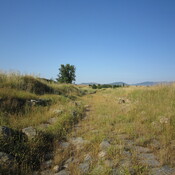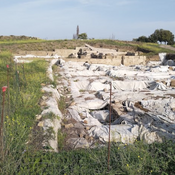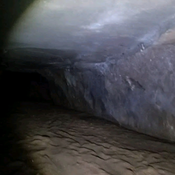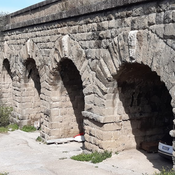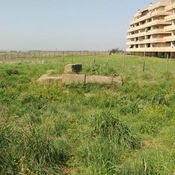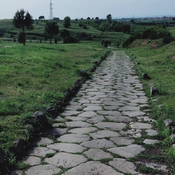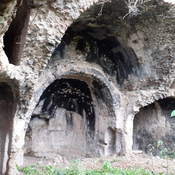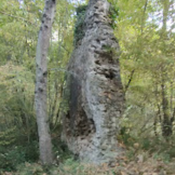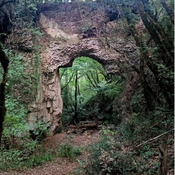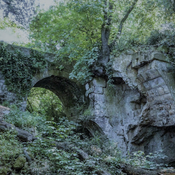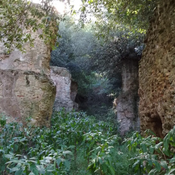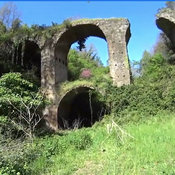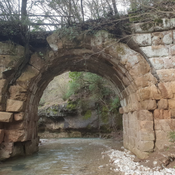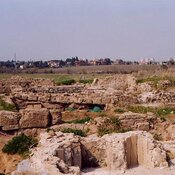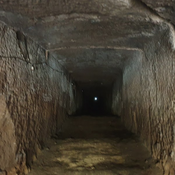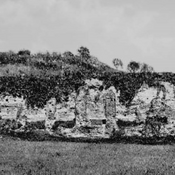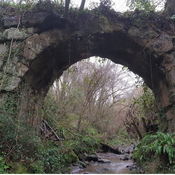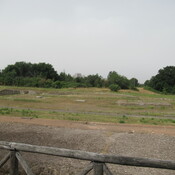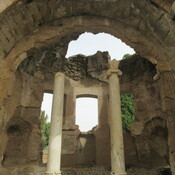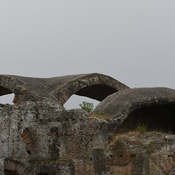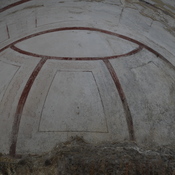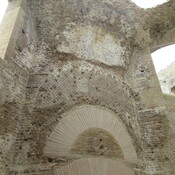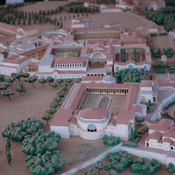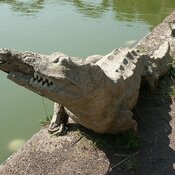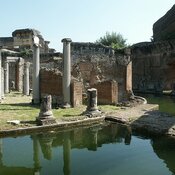The most conspicuous ruin remaining at the site of Gabii is a temple, generally attributed to Juno, which had six Ionic or Corinthian columns in the front and six on each side, excluding the back. The temple was composed of a single room (cella), and it was made of lapis Gabinus, a fire-resistant rock that was found in the quarries around Gabii and that also made its way into some of the buildings of Rome itself. The temple was situated in the middle of a podium, which had a colonnade of Doric columns along the back and extending around the sides. This colonnade stood in front of rooms of unknown function, perhaps multi-functional, for such uses as temple shops.[26] The temple was excavated and published by the Spanish School at Rome in the 1960s and 1970s.
The temple was constructed 150-100 BC. A painted inscription (IVN) on an antefix identifies it as a temple of Juno. Around the rear of the temple (on the cliff side), which faced and towered above the road, were about 55 pits for planting trees representing a sacred grove. The site began as sacred in the 7th century BC featuring such a grove in which one tree was especially worshipped. In the 4th century BC a small shrine was constructed next to the grove around and in connection with which caches of anatomical terra cotta statuettes were found. This type of statuette modeled an organ or section of the human body and was given as a votive offering at a healing sanctuary, of which a great many have been found in Latium, in hope that divinity would turn its attention to healing the organ of the dedicator.[29] Also found were some votive pedestals inscribed to Fortuna. A pavement was inscribed to Jupiter Jurarius ("of oaths"), indicating possible state functions of the site. There were two other shrines at the location.
The subsequent temple to Juno remained in use during the empire, after the town was abandoned.1
External links:
Lapis Gabinus: official blog of the Gabii Project


